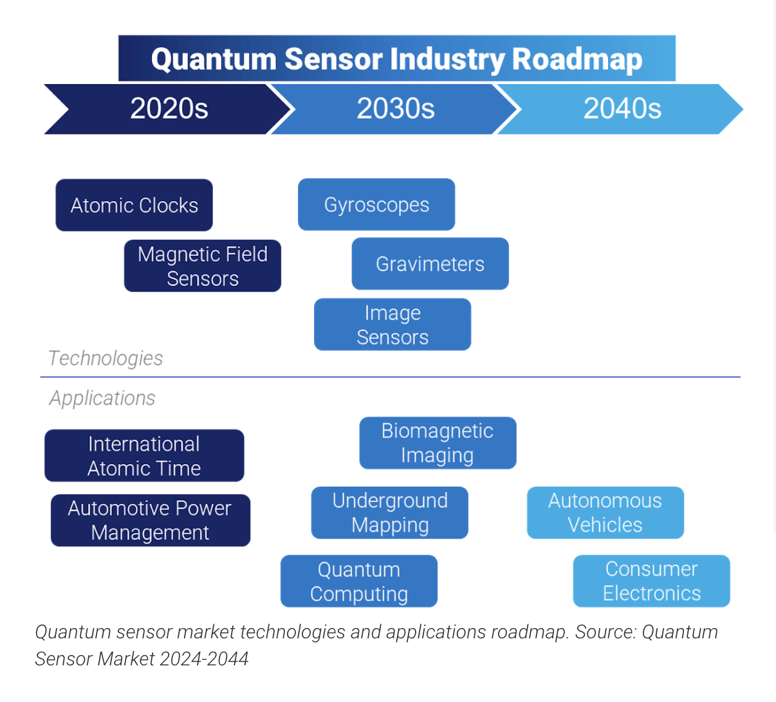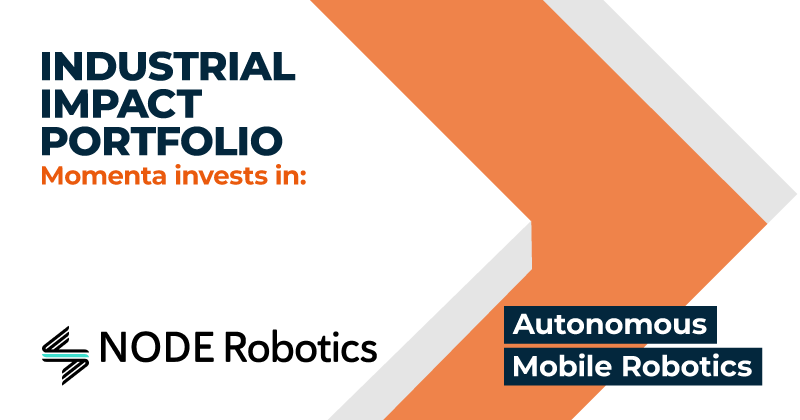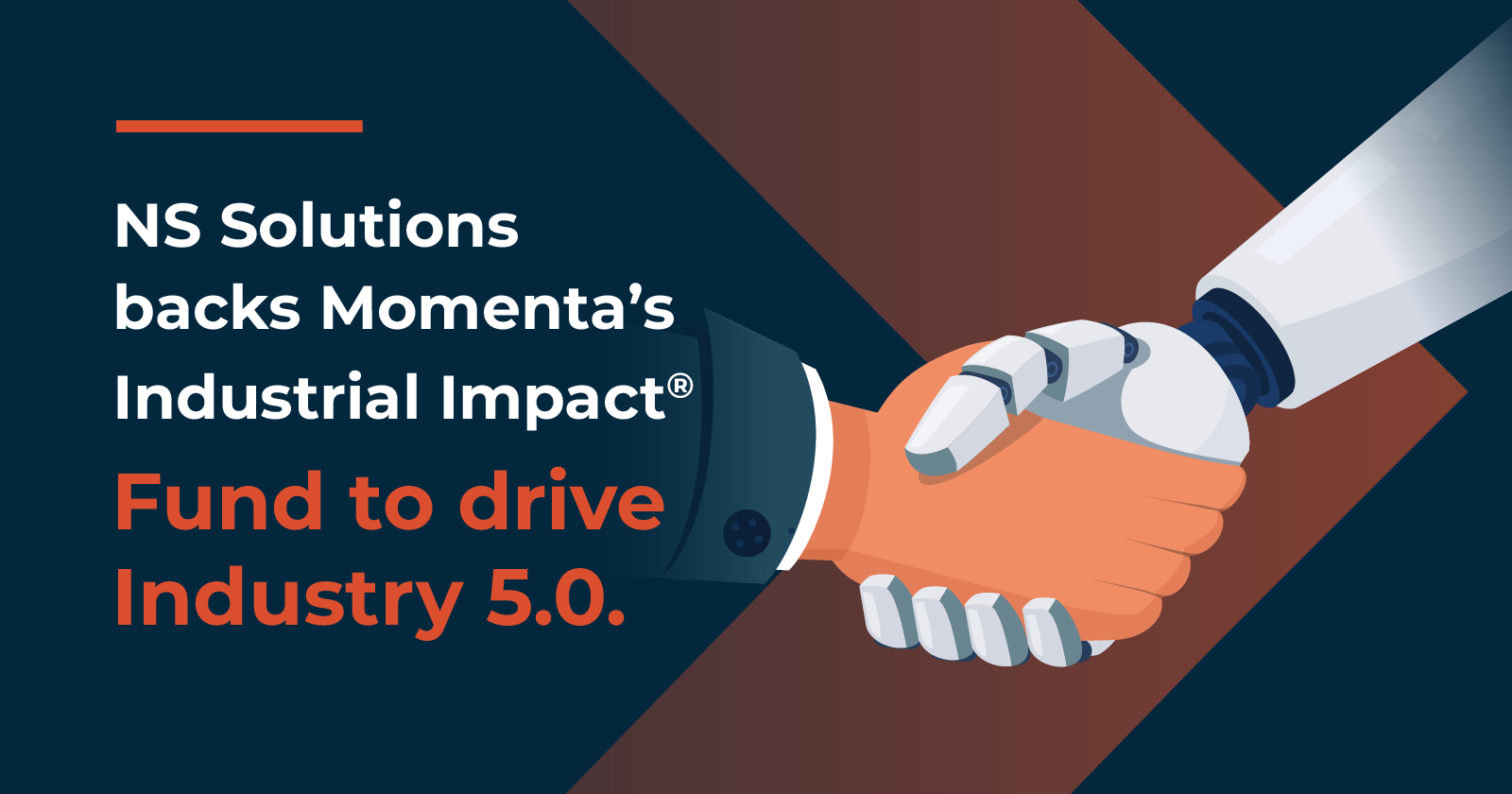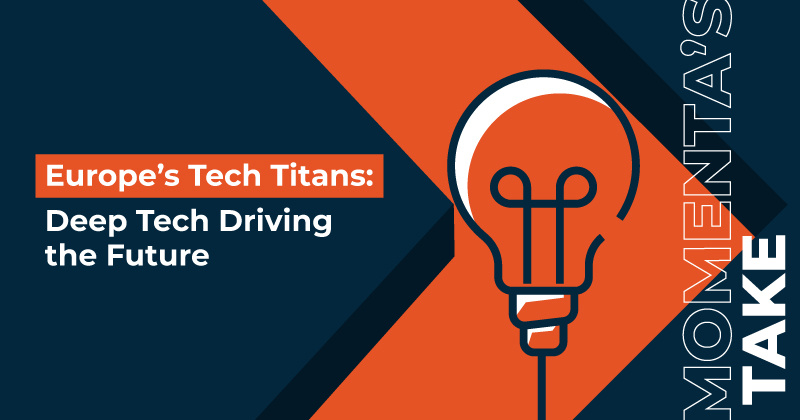PART 3 of 3
Quantum Components: Empowering New Applications
Ken Forster
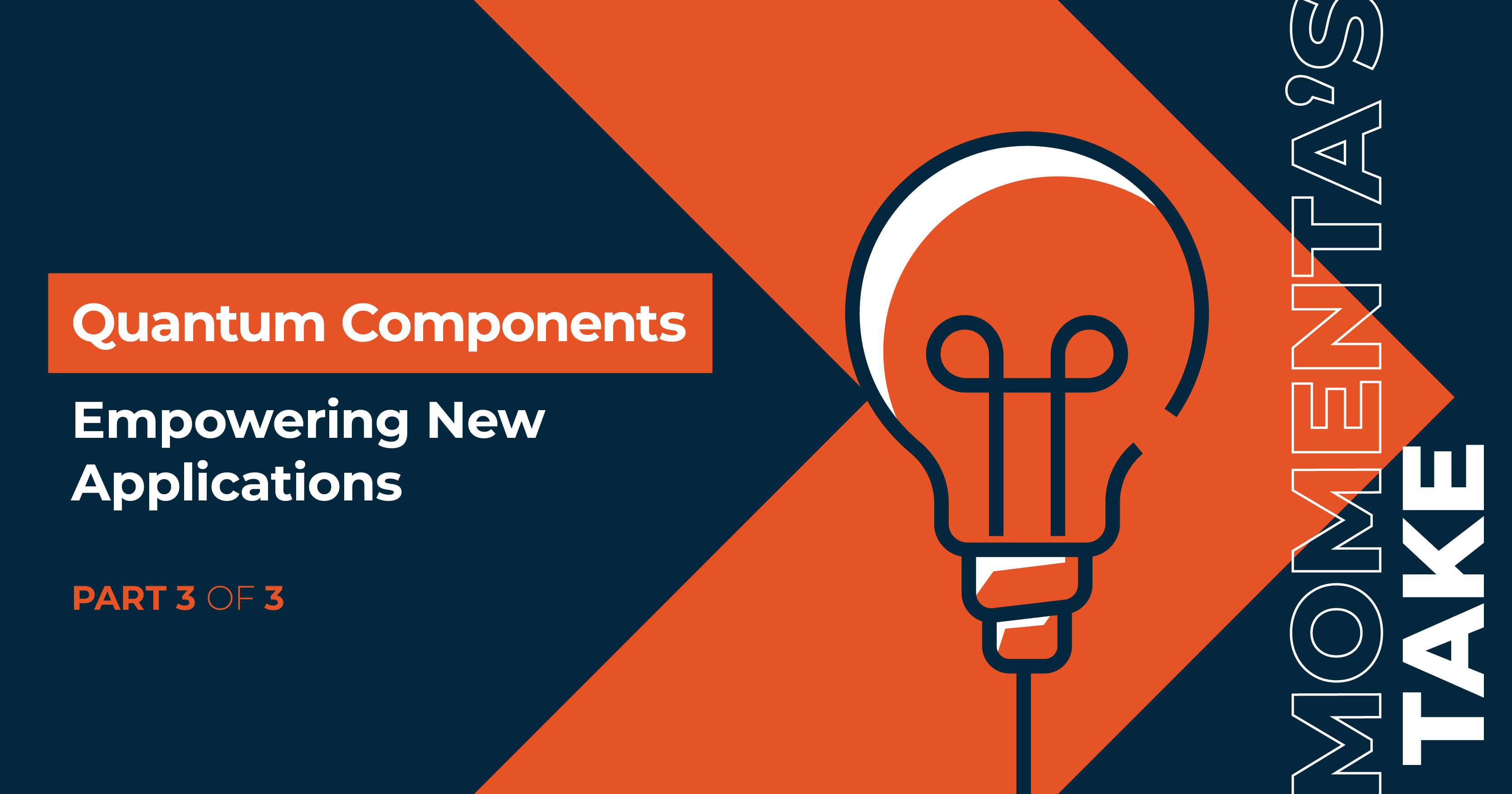
Welcome back to our Quantum Technologies Series. Parts One and Two of this series delved into quantum computing and communications, two key emerging areas in quantum information technologies. This last part will explore quantum-enabled components, including sensors and instrumentation, critical for enabling new applications.
Quantum Sensing & Instruments
The term "Quanta" was first used to describe the existence of the smallest energy states of matter. When we say "quantum," we generally refer to matter's fundamental sub-atomic energy states: Charge, Spin, and Momentum.
Quantum-mechanical sensors aim to exploit these fundamental properties to make precise measurements of the natural world at the limits of quantum sensitivity. Quantum sensors can quantify acceleration, magnetic fields, rotation, gravity, and the passage of time more precisely than existing 'micro' or 'nano' sensors. For instance, magnetic quantum tunneling junction effects are now used in nonvolatile memory applications and next-generation automotive magnetic and electric field sensors.
Quantum-mechanical instruments are also a critical enabler in actively and precisely controlling the fabricated sub-atomic machine world inside a quantum computer's QPU gate arrays and providing critical elements in quantum communications equipment. Optical tweezers and Magneto-Optical Traps are some examples of these elements. Large lab equipment built 20 years ago to support research into understanding quantum mechanics is now miniaturized for use inside quantum machines.
The future is about quantum information science - encoding, controlling, and decoding quantum information in physical atomic states of matter. Take the red pill with me, and let’s drop into the rabbit hole again…
Sensing Evolves
Early applications of quantum measurement included atomic clocks, laser interferometry, magnetic resonance imaging, solar cells, LEDs, digital cameras, and optical sensors.
We are now seeing a new class of quantum sensors that promise greater accuracy, stability, sensitivity, precision, robustness, and miniaturization. Common types of measurement include Time, Frequency, Temperature, Motion, Acceleration, and Fields (Magnetic, Electromagnetic, Gravitation, etc.). Let's look at a few examples emerging in the market today.
Timing and Clocks
Temporal control and synchronization are essential to computing, networking, and sensing applications. Atomic clocks that measure time by monitoring the resonant frequency of atoms have been in use since the 1950s. Still, due to their size, weight, cost, and frequency limitations, they cannot uniquely provide the frequency accuracy, drift stability, size, and mobility needed for autonomous navigation, GPS-denied operations, quantum computing, or quantum networking applications.
Next-generation quantum-enabled optical clocks now being developed will provide enhanced frequency stability, smaller form factors, and consume much less power. These systems will enable classical networks to carry more data as they evolve. Business applications that require a high degree of time-stamp synchronization for geo-locating or high-security needs will benefit. Over the next five years, we will see quantum-enabled quantum clock technologies in applications such as higher-frequency financial transactions, secure distributed trade and settlement networks, optical network switching, and V2X infrastructures.
In addition to improving current classic digital and optics infrastructures, these next-generation timing and synchronization technologies will become essential as integrative elements into the emerging quantum ecosystem infrastructure - quantum computers, networks, and edge devices.
.
Navigation Applications - PNT (Positioning, Navigation, Timing)
Today's aircraft use Laser-Ring Gyroscopes (LRGs) for precise vehicle inertial rotation measurement. They are an example of first-generation photonic quantum interference sensing systems. LRGs are part of today's aircraft's navigation systems, which rely on GPS for real-time positioning. The next generation of quantum-enabled navigation is focused on enabling operations in GPS-denied locations such as undersea, subterranean, and space. Newly evolving quantum positioning and navigation techniques could replace dependencies on space-based GPS with miniaturization to enable autonomous vehicles to navigate without GPS.
One technique for inertial navigation and positioning uses Cold-Atom-based quantum technology, leveraging precisely tuned miniature lasers to confine and slow down atoms into the quantum states of superposition and entanglement. This technique enables high-precision small sensors suitable for navigation onboard drones and other autonomous systems. In addition to gyroscopic rotation, Cold-Atom sensors are also used to measure time, acceleration, electromagnetic waves, and magnetic fields. Many emerging quantum effect technologies will enable PNT in smaller and more cost-effective packing. This will likely be a high-growth market as size, weight, and power consumption are further reduced.
Biomedical Imaging Applications
The atomic-length scale of quantum sensors and their coherence properties enable new levels of resolution and sensitivity in biomedical imaging. One exciting quantum sensing technology involves Nitrogen Vacancies (NV) in synthetic diamond crystals, where tiny, deliberate flaws (color centers) form the "qubits." One carbon atom in the diamond lattice is replaced with a nitrogen atom and sits next to a vacancy (where no atom is present). This causes the centers to allow light absorption and—upon releasing energy—light emission. Color centers exhibit an unpaired electron with a spin; if a magnetic field exists, the electron's spin oscillates around that field. When a magnetic field increases or decreases, it will oscillate faster or slower, which changes the light emission of the NV color centers.
Recent testing with NV bio-sensor-based applications is yielding valuable applications:
- Recording electrical activity from individual neurons in living brain tissue,
- Magnetometry of single neurons and magnetic biomarkers, with sub-cellular resolution and
- Nanoscale detection of single molecules and single cells
Recent advancements in NV diamond manufacturing have also led to the availability of room-temperature table-top quantum diamond-based microscopes capable of micro-scale magnetic field mapping applications.
Fig. 1: Quantum sensors will impact biomedical research on different length scales.
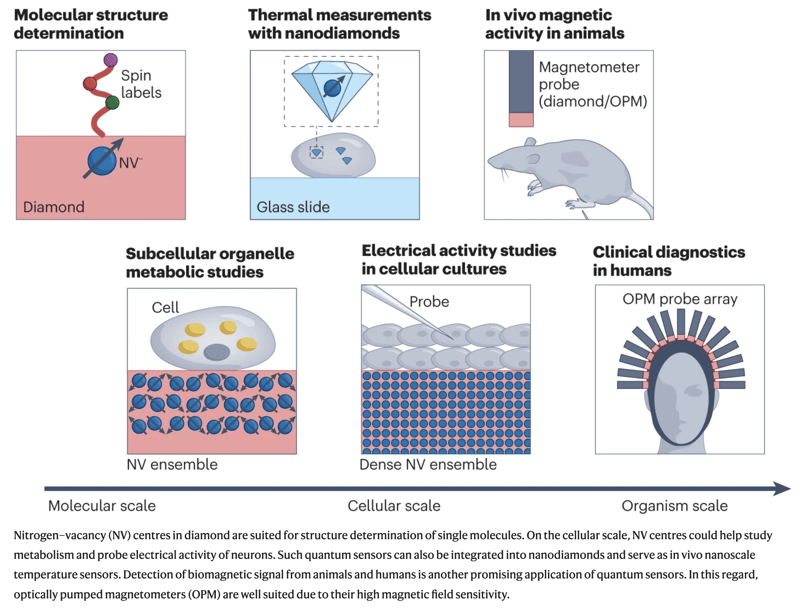
Source: https://www.nature.com/articles/s42254-023-00558-3#Abs3
Summarizing Applications
By relying on the most fundamental properties of nature, quantum sensors will push sensitivity and precision to the known limits of physics. Potential applications are truly boundless, with new developments underway across many traditional application areas, such as quantum memory devices, quantum RF, quantum RADAR, and many more.
Due to the large volume of subtle data collected in these new sensors, the opportunity to gain insight from the rich depth of detailed sensory data is overwhelming. Intelligent noise filtering and error correction are critical. Further enhancements in embedded information processing algorithms and firmware in sensor electronics will need to evolve along with physical sensor materials and manufacturing evolution. Quantum information science and advanced algorithms will play an essential role in optimizing quantum-enabled autonomous and distributed systems.
Market growth
Research universities, sensor and instrumentation vendors, semiconductor companies, and domain-centric start-ups are racing to market new quantum-enabled sensor and instrumentation solutions.
Quantum sensor market forecast to reach US$7.1 billion by 2044 with a CAGR of 18%
Source: idtechex.com
Commercializing the Quantum-Edge (Q-Edge)
When can quantum sensors and quantum instrumentation communicate through a quantum network into a quantum computer? It's happening now in research labs on a small scale. When will it begin to scale into early commercial operations? Many experts developing systems anticipate that 2027 will be a pivotal year for commercial adoption in Industrial segments. Meanwhile, leading quantum computing, networking, and sensor solutions find their way into Space/Defense, Government, Fintech, Banking, Bioresearch, physics research, and Industrial/Energy Grid applications.
Enabling quantum operations in the not-too-distant future will require many of the same ecosystem advancements seen in the prior ML-Ops technology adoption wave. Ecosystem advancements in the quantum-enabled and connected edge will include integration and orchestration management, plug-and-play interoperability, security protocols, data rights management, miniaturization, industrial robustness, and telecom standardization, to name a few.
Some of the more technical capabilities needed to drive quantum technology scalability at the network edge include:
- High-quality qubits with long coherence times,
- Durable connectivity between qubits in Edge devices and networking nodes,
- Industrial Temperature-tolerant technologies that do not require cryogenics,
- Field configurability and programable components for long service lives,
- Photonic integration and multi-vendor orchestration,
- Qubit modality-agnostic networking platforms,
- Edge device local quantum data process acceleration (Q-ML) and
- Quantum algorithms
Quantum Operations (Q-Ops)
Based on first-hand information and general industry activity, I'll make a few prognostications:
- Orders for next-generation quantum computers are building across the vendor base, spawned by governmental buying across many countries. The race is now on with money behind it. Since investment in quantum computing is now a high-priority "country-specific" investment initiative, we can expect less early-market "shake-out" of quantum technology vendors. Thus, we will likely end up with many vendors employing differing qubit-modalities for some time.
- The ecosystem and availability of quantum applications are increasing in nearly every domain, driven by wide industry support, research universities, and governmental economic development activity worldwide. As a result, growth in new applications is likely to be higher than industry expectations for the next few years.
- In 2024, we will see increasing use of quantum computing by corporations to explore operational optimization solutions.
- 2025 will be an inflection point when Quantum networking deployments begin to scale larger than metro-area networks. With that, more quantum-sensor edge solutions will be deployed in data-sensitive operations.
- I expect we will begin to marvel at the speed at which natural science discoveries (biology, meteorology, materials) are made by around 2027.
- I expect to see real-time international trade settlement on quantum networks before 2028.
- With next-generation "very-aware" quantum sensing at the edge, with 3GPP 6G beginning to roll out in 2028 and private hybrid-quantum networking beginning to scale, I expect 2030 to open the door to radically different enterprise and governmental operations.
The workforce for the quantum age will also look different. Many universities are now producing quantum information science graduates with a foundational understanding of quantum physics, algorithms, and probabilistic mathematics.
Understanding the principles of entanglement, interference, non-locality, teleportation, and no-cloning may seem theoretical right now, but understanding these concepts will be vital to ensure sound decisions surrounding quantum information science investment, policy, and governance in the future.
Thank you for joining me on this brief dive into the quantum technology vortex.
Explore our complete series on Quantum Technologies!
- Quantum Categories and Quantum Computing (1 of 3)
- Quantum Communications and Security (2 of 3)
- Quantum Components Empowering New Applications (3 of 3)
![]()
QUANTUM SENSOR AND INSTRUMENTATION COMPANIES
![]()
Momenta is the leading Digital Industry venture capital + growth firm accelerating deep tech innovators across energy, manufacturing, smart spaces, and supply chain. For over a decade, our team of deep industry operators have helped scale industry leaders and innovators via our award-winning executive search and strategic advisory teams.

